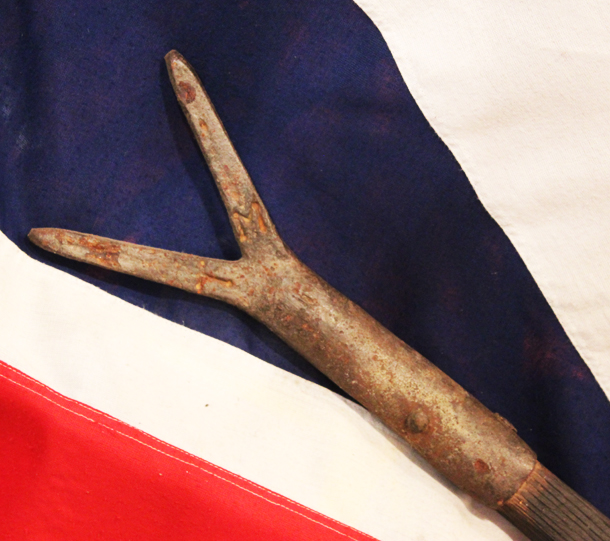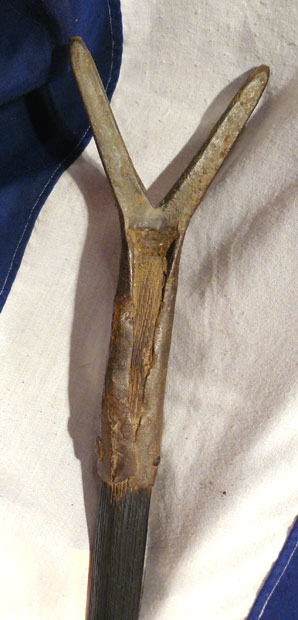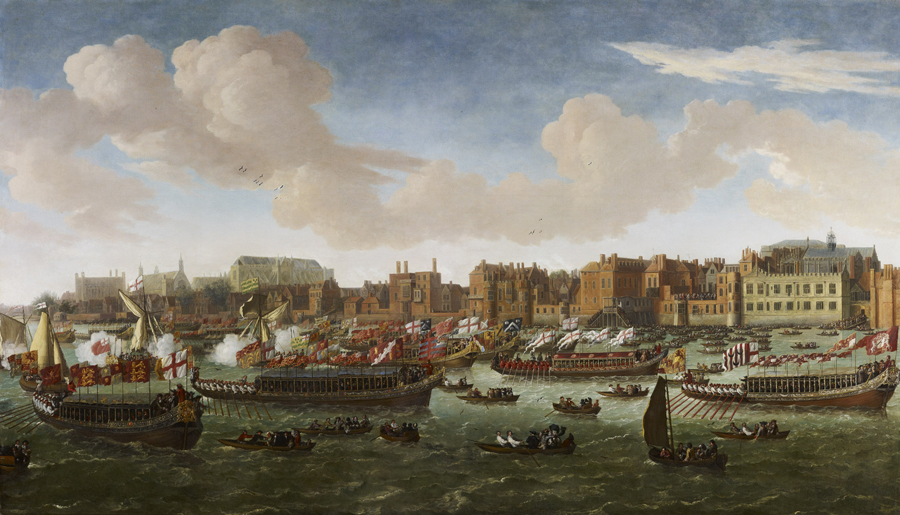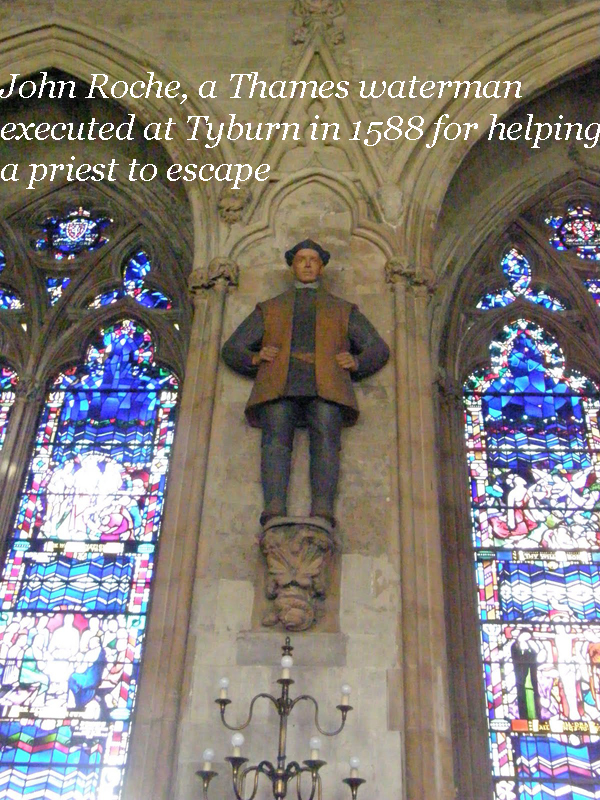Very Rare Company Of Watermen, River Thames, Tudor' Barge Fork Circa 1530 Ideal For A Tudor House or Museum Type Display. From The Era of Thomas Cromwell A Frequent User Of Thames Barges
Large 'Y' shaped head and old oak haft. It bears two large letters stamped in the iron ' T & M'. These are likely for a Barge Company of Waterman mark. We had another about 10 years ago bearing the same company mark and these historical artifacts are now really rare. Recovered from the Thames near London Bridge. In the 16th Century the Company of Watermen were the equivalent to today’s cabbies. Created by an Act of Parliament in 1556 and their trade was carefully licensed. They would ply for hire from designated locations along the Thames, with the cry of ‘Oars! Oars!’
When the watermen were not transporting people they would turn their hand to salvage and found a brisk trade in finding bodies, either suicides or those who?d accidentally drowned or been murdered. By a curious quirk of history, the origins of which are now lost, bodies were almost always landed on the south side of the river because the authorities would pay a shilling for a body landed in Southwark but only sixpence for one landed on the north bank. Clearly waterborne cabbies were not averse to ‘going south of the river’ in those days.
One on the best trips for the Watermen was from the City to as far up river as Hampton Court.The trade was not without its dangers; if you wanted to travel downstream below London Bridge you risked life and limb. A major feature of London Bridge was the effect it had on the Thames. The location of the bridge?s 19 timber pier supports (called starlings) was determined by riverbed conditions and this meant that they were varied in spacing across the river. Consequently, the arch spans varied in size too and boats navigating the arches encountered different currents and river conditions at each one. Some were more dangerous than others. Over the years, boatmen christened the arches with various names, such as Gut, Lock and Long Entry. Navigating through these arches in a boat could be very dangerous because the closeness and number of starlings backed up the river water, creating rapids. In some places the drop in water height from one side of the bridge to the other was more than the height of a man. Many people lost their lives ‘shooting’ the bridge and ‘Drowned at the bridge’ became a common entry in the registers at nearby graveyards, but most Londoners took Cardinal Wolsey's example. On his frequent visits to Greenwich to see Henry VIII, he would have his barge stopped above the bridge and get out and travel to Billingsgate by mule, where he would rejoin his barge, providing it had successfully negotiated the rapids. The barge fork was used to push a barge away from an obstruction, or for pushing off from the river bank or jetty. The last picture is of a statue of the Martyr John Roche a Thames Waterman, Martyred at Tyburn in 1588, who is mounted St Etheldreda’s Church in Ely Place, London, along the North and South walls, alongside his fellow 7 Martyrs. Fork head 13.1 inches long by 6.25 inches across. Total length around 5+ foot.
Every item is accompanied with our unique, Certificate of Authenticity. Of course any certificate of authenticity, given by even the best specialist dealers, in any field, all around the world, is simply a piece of paper,…however, ours is backed up with the fact we are the largest dealers of our kind in the world, with over 100 years and four generation’s of professional trading experience behind us
Code: 21232
850.00 GBP





